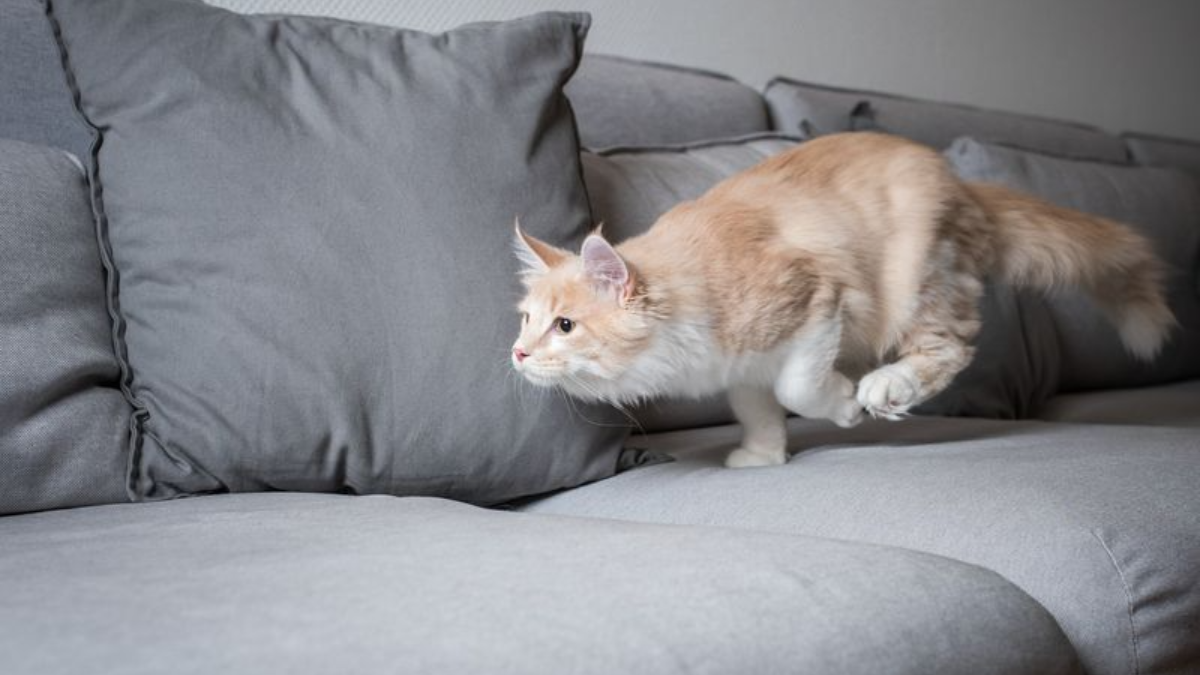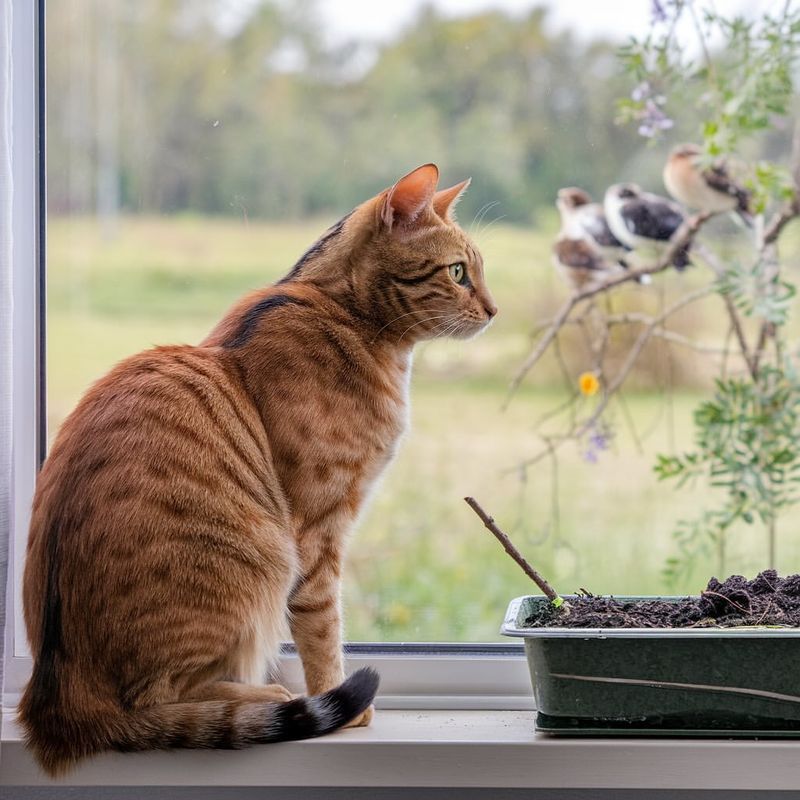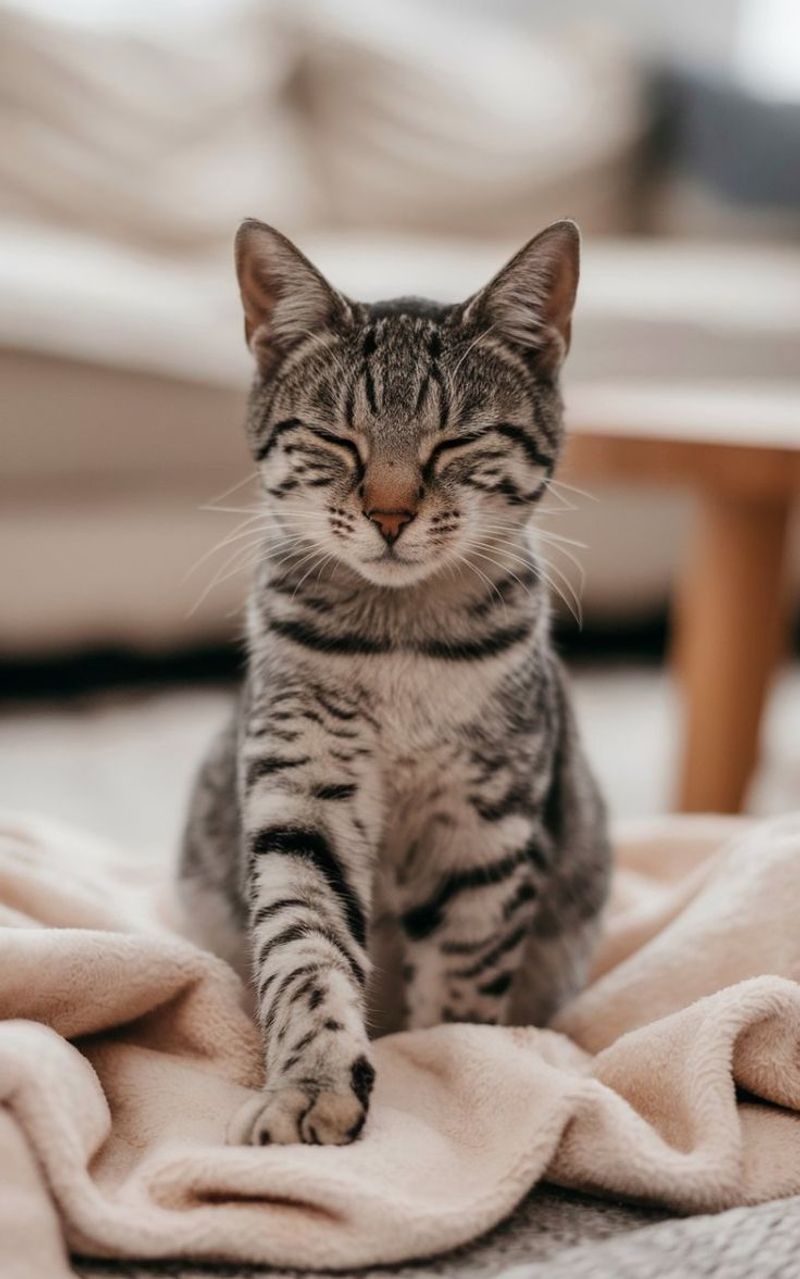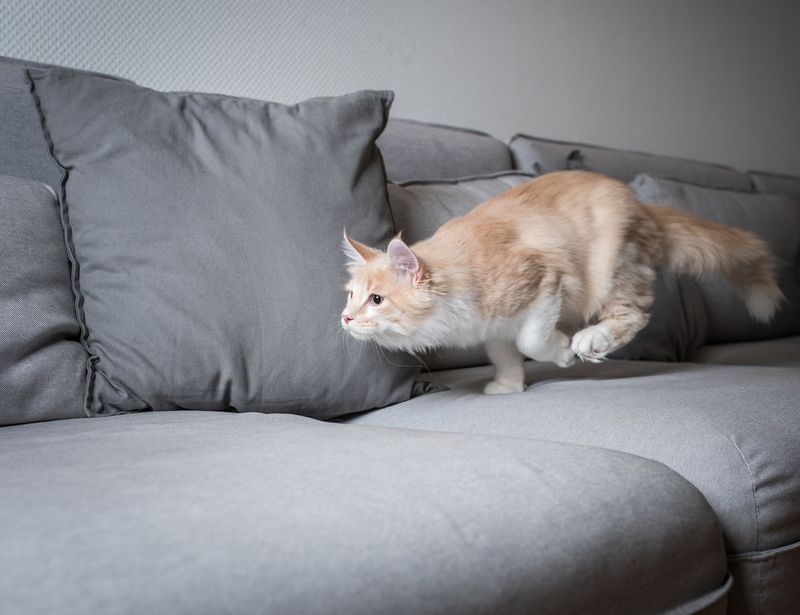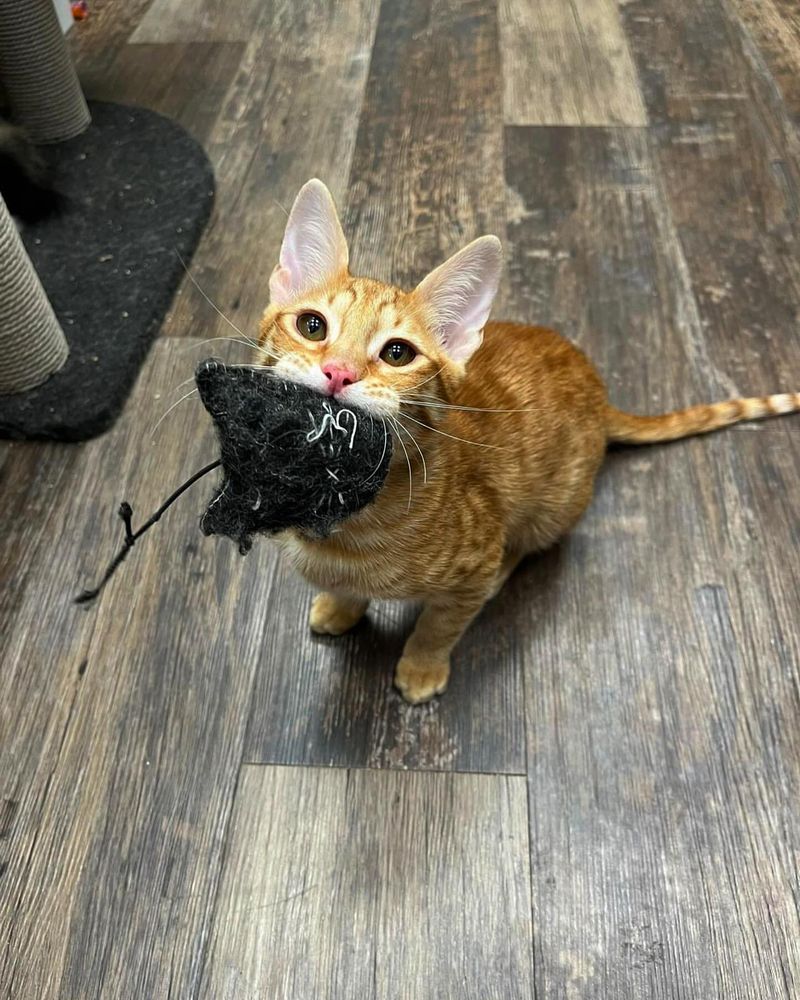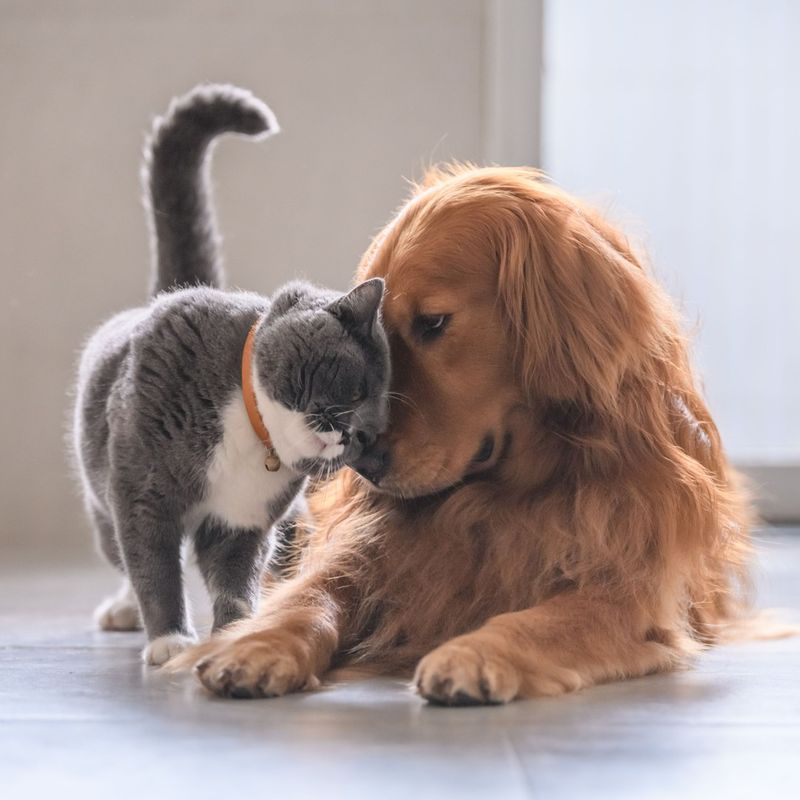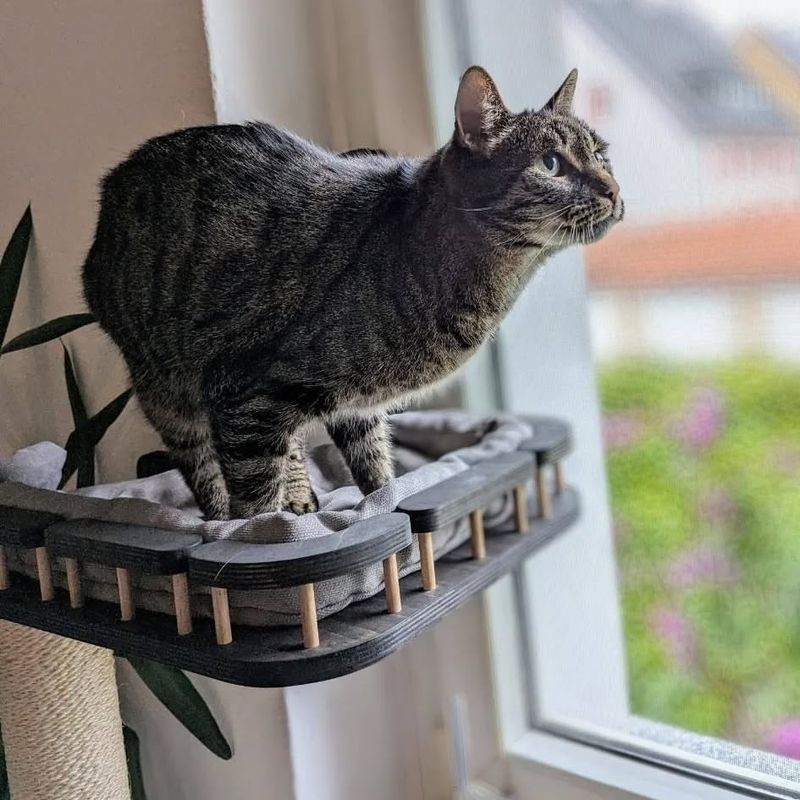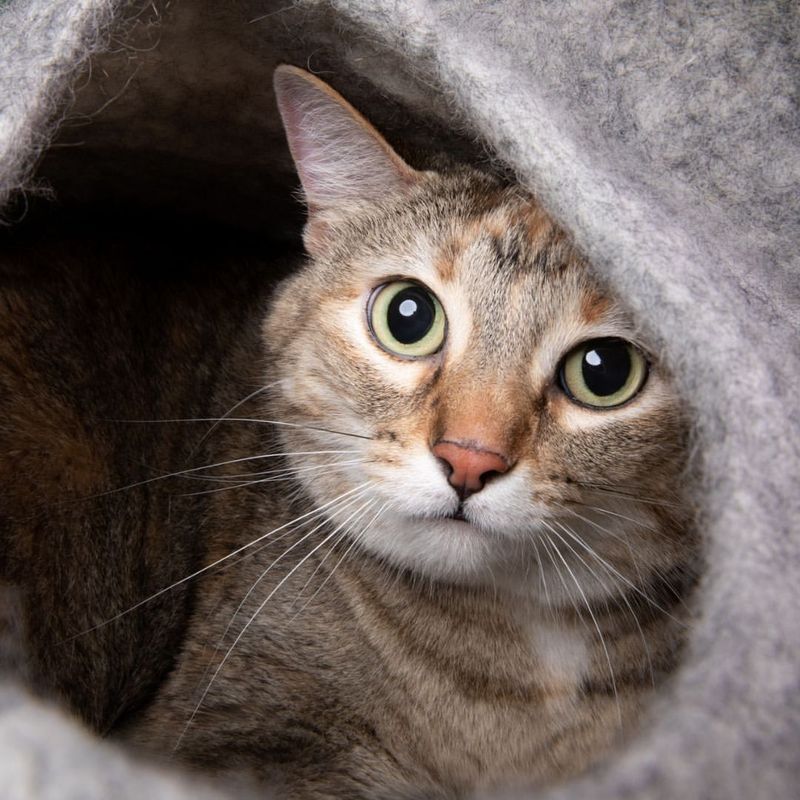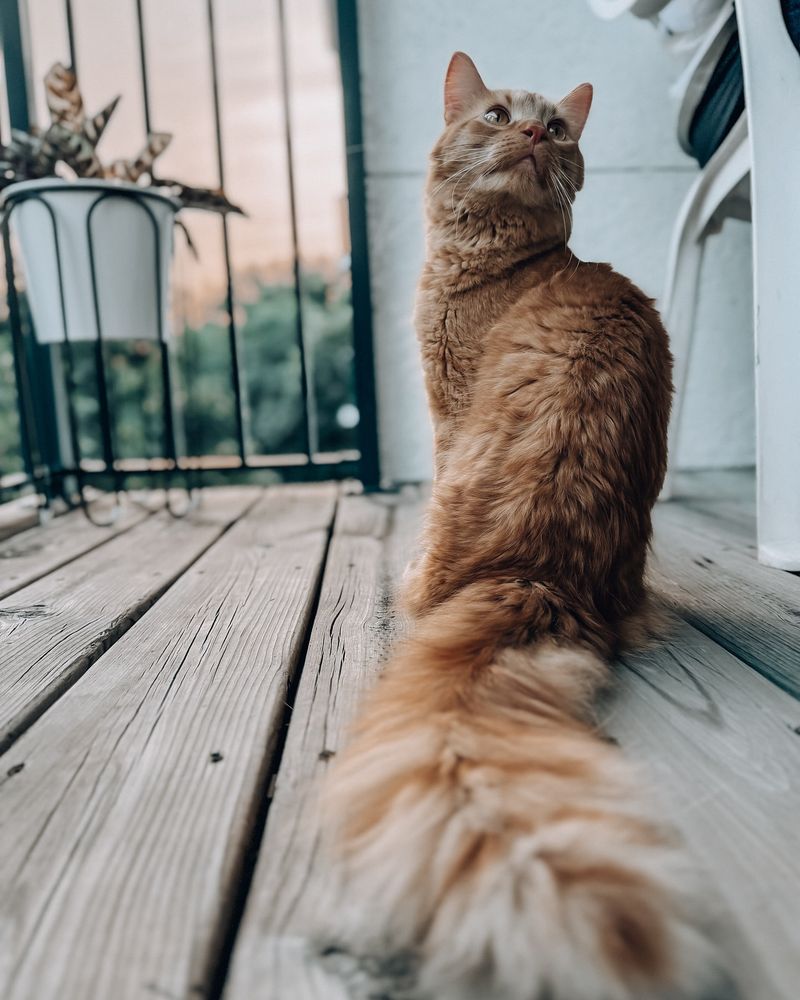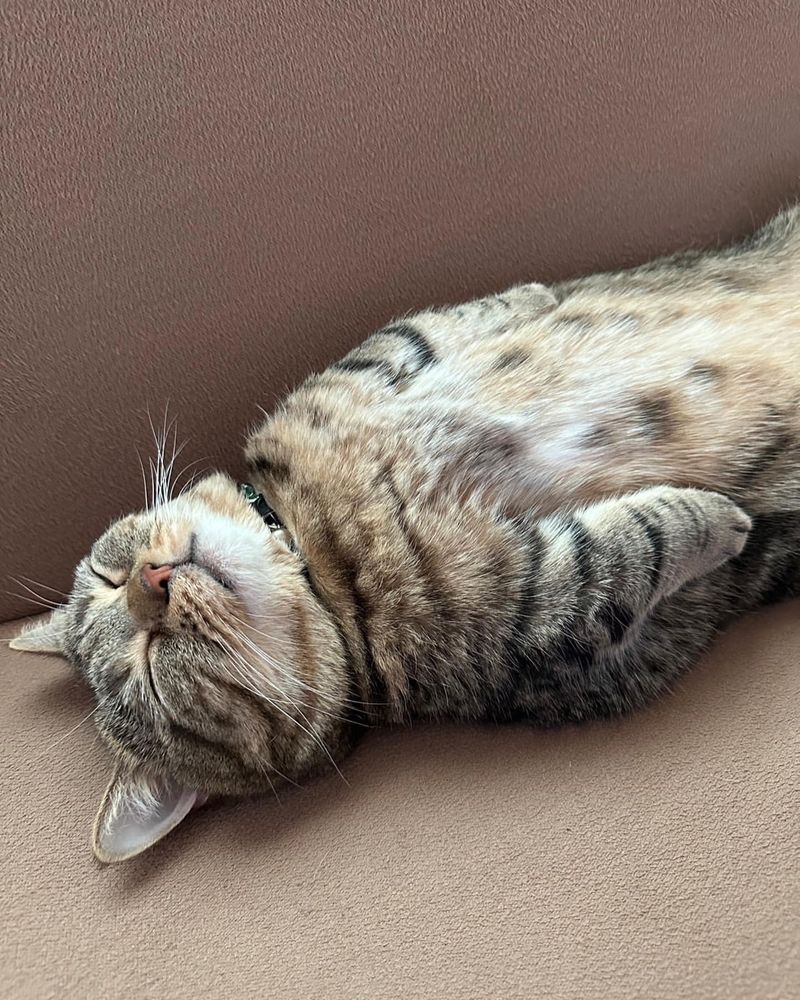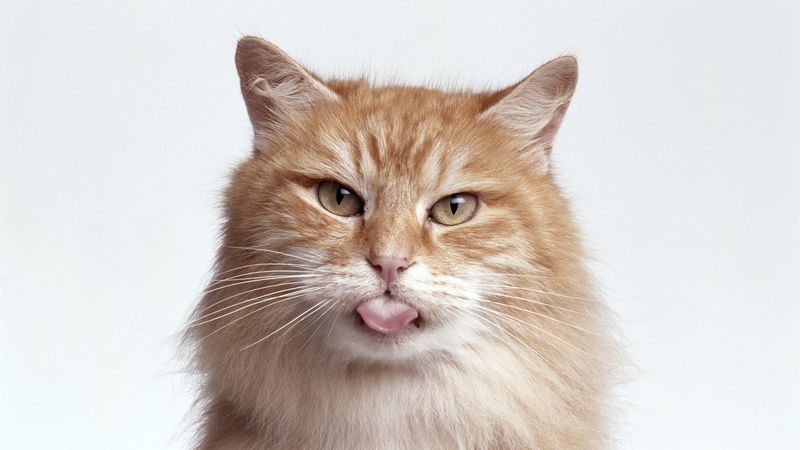📖 Table of Content:
If you’ve ever caught your cat zooming around the house at 3 a.m. or staring at a blank wall like it holds the secrets of the universe, you’ve probably found yourself asking, Why on earth do they do this?
Cats are fascinating, quirky creatures with behaviors that often leave us scratching our heads. But as odd as their antics may seem, there’s usually a logical (and sometimes adorable) reason behind them.
From their mysterious sleeping positions to that curious obsession with stalking birds, these seemingly strange actions are rooted in instinct, biology, or their unique way of navigating the world.
In this article, we’re diving into 10 of the weirdest cat behaviors—and the surprisingly sensible reasons behind them.
1. Chattering at Birds
Ever noticed your cat sitting by the window, chattering at birds with an odd clicking sound? This behavior may seem strange, but it is deeply rooted in their hunting instincts. Cats make these noises to mimic bird calls, believing it might lure the prey closer. They practice this technique even when they’re well-fed.
Another theory suggests that cats chatter out of frustration, expressing their desire to hunt but being restricted by the barrier of the window. This behavior showcases their keen predatory instincts and adaptability in a domestic setting.
In essence, the chattering signifies a complex mix of instinct and emotion, reflecting the cat’s innate hunting prowess. By understanding this behavior, cat owners can appreciate the depth of their pet’s instinctual drive and perhaps engage them in interactive play to satisfy this urge.
2. Kneading with Paws
Kneading, or “making biscuits,” is when cats rhythmically push their paws into a soft surface. This behavior originates from kittenhood, as they knead their mother’s belly to stimulate milk flow. It’s a comforting action that persists into adulthood, bringing calm and security.
When cats knead, they may be marking territory with scent glands in their paws. This dual-purpose action not only soothes them but also claims ownership of a favorite spot.
Kneading is a sign of contentment and relaxation, often accompanied by purring. It’s a behavior that signals happiness and trust in their environment. Understanding kneading helps pet owners recognize moments of feline bliss and provides insights into their cat’s emotional state, making it a treasured interaction that strengthens the human-cat bond.
3. Zoomies After the Litter Box
The phenomenon of cats dashing around the house after using the litter box, commonly called “zoomies,” can puzzle many cat owners. It’s an energetic burst that occurs post-elimination, often seen as a form of celebration or relief.
Some experts speculate that this behavior is an instinctual act, mimicking the wild where cats quickly move away from their waste to avoid attracting predators. Another theory suggests that the sudden sense of cleanliness and lightness triggers an adrenaline rush, leading to a playful sprint.
Understanding zoomies can help owners provide safe environments for their cats to express this exuberant energy. Creating space for these playful moments allows cats to indulge in their natural instincts, making the home a dynamic and engaging place for their curious exploration.
4. Bringing ‘Gifts’ to Owners
Cats have a peculiar habit of bringing their owners “gifts,” which often include toys or, more unsettling, actual prey. This behavior is rooted in their instinctual hunting and nurturing tendencies.
In the wild, cats teach their young to hunt by bringing back dead or injured prey. Domesticated cats often translate this instinct into presenting their human companions with what they catch or play with, viewing humans as part of their family.
While it might be off-putting to find a mouse on your doorstep, it’s a sign of affection and trust. Recognizing this behavior helps owners appreciate the cat’s intention to share and care, strengthening the emotional connection and understanding between humans and their feline friends.
5. Head Bunting
Head bunting is a behavior where cats press their heads against people or objects, a sign of affection and marking territory. This gesture spreads pheromones from scent glands located on their heads, marking their human or space as safe and comforting.
It’s a social behavior, reflecting trust and camaraderie. Cats often bunt against those they feel comfortable with, serving as a bonding exercise. This action is a profound expression of love in the feline world.
When your cat engages in head bunting, it’s a testament to your strong bond. Recognizing this gesture as a token of trust and friendship enhances your relationship, allowing for a deeper, more meaningful connection with your furry companion. Engaging with them during these moments can fortify the mutual affection shared.
6. Staring at Nothing
Cats are known for their mysterious stares, often appearing to gaze at nothing. This behavior can bewilder owners but makes sense from a feline perspective. Cats have acute senses and are attuned to subtle movements and sounds imperceptible to humans.
Their staring might indicate they are tracking something tiny, like a dust particle, or listening to faint noises, exercising their predatory instincts. Another reason could be their contemplative nature, as they take in their environment, processing stimuli.
Understanding this behavior can aid owners in appreciating a cat’s heightened senses and capacity for deep focus. Providing toys or interactive play can channel this focus into engaging activities, offering mental stimulation and satisfaction for your curious feline friend.
7. Hiding in Small Spaces
Your cat’s penchant for squeezing into small spaces, like boxes or bags, is a charming yet odd behavior. This instinctual action is tied to their need for security and warmth, reminiscent of the snug spaces in the wild.
In tight quarters, cats feel protected from potential threats, making these spots ideal for napping or hiding. The enclosed environment provides a sense of safety and control, essential for their well-being.
By understanding this behavior, cat owners can create safe and cozy spaces, offering their pets a retreat for relaxation. Providing boxes or designated spots can satisfy this instinct, contributing to a content and secure cat. Recognizing this desire for comfort can enhance their living environment, promoting happiness and tranquility.
8. Tail Quivering
When a cat’s tail quivers, it may seem peculiar, yet it carries significant meaning. Tail quivering often indicates excitement, affection, or marking territory. This behavior is commonly seen when greeting their favorite humans or in response to a stimulating environment.
The quivering tail can also signal marking, as cats release pheromones to claim territory or objects. It’s a multifaceted gesture that combines communication and emotional expression.
Understanding tail quivering helps owners gauge their cat’s emotional state and intentions, fostering better interaction. Recognizing this behavior allows for more meaningful engagements, enhancing the bond with your cat. Providing positive reinforcement during these moments can further strengthen the mutual affection and trust shared between pet and owner.
9. Sleeping in Unusual Positions
Cats often sleep in bizarre positions, leaving owners puzzled. However, these sleeping habits are strategic, reflecting comfort and trust. Cats choose their sleeping posture based on temperature, security, and personal comfort.
A cat sprawled out might be seeking warmth from the sun, while a curled position offers protection and warmth. Their unique positions indicate a sense of safety in their environment, where they can rest without worry.
By understanding these sleeping behaviors, owners can ensure their cats have cozy and safe spots to rest. Creating inviting sleeping areas allows cats to relax and rejuvenate, contributing to their overall well-being. Observing their sleep habits offers insights into their comfort level and happiness at home.
10. Ignoring You
Cats are famously independent, and their occasional indifference can be perplexing. However, ignoring their human companions doesn’t necessarily mean disinterest. It’s part of their independent nature and a sign of comfort in their surroundings.
Cats may ignore you when they feel secure and content, trusting that their needs will be met without constant attention. This behavior also reflects their natural rhythm, switching between social interaction and solitude.
Understanding this aspect of feline behavior helps owners respect their pet’s autonomy. Providing a balanced environment where cats can choose interaction or solitude fosters a trusting relationship, enhancing the harmony between human and feline. Embracing their independence allows for a respectful and appreciative companionship.
